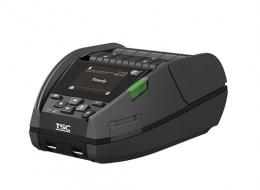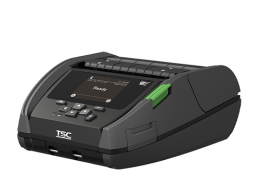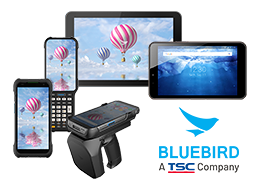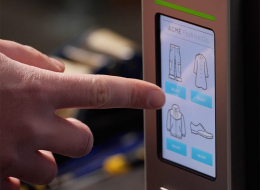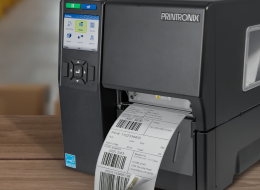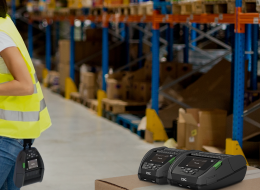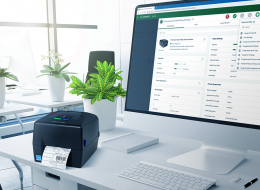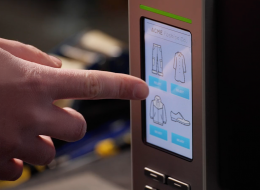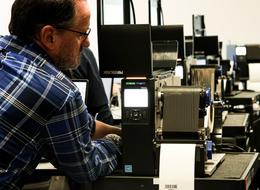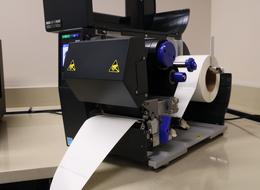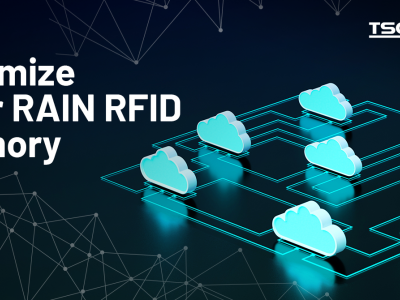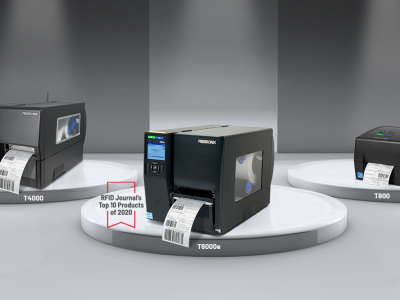Understanding ISO-Based RFID Encodings: A Primer from Our RFID Subject Matter Expert
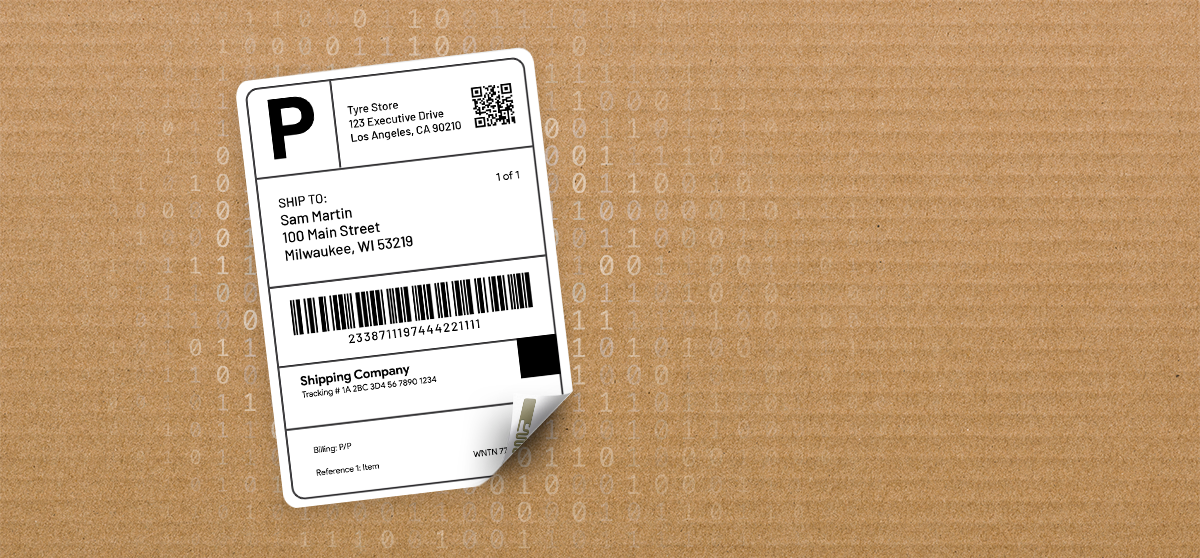
When you encode your RFID tags, what data should you encode to them? Our RFID Subject Matter Expert, Chris Brown, dug into this topic in a recent article published in the RFID Journal, “An Introduction to ISO-based RFID Encodings.”
Tags that are not encoded according to a data standard will eventually interfere with tags from other applications (also known as “Tag Clutter”). We believe that about 30% of tags out in the world have been encoded with proprietary, rogue encodings and fall into this category.
Today we’ll present some highlights from the RFID Journal article to help you get started with ISO-based RFID encodings — and help you avoid Tag Clutter due to rogue encodings — and overview some basics about RFID standards.
Introduction to RFID Encoding Standards
Most people are familiar with RFID in retail and using GS1 standards. To better understand the framework, there are two main families of tag data encoding standards:
- GS1’s EPC Tag Data Standard
- Various ISO-based standards:
- Most relevant standards for RFID can be found here on ISO.org
- New RAIN Alliance ISO Numbering System can be found at RAINRFID.org
GS1’s Tag Data Standard is relatively straightforward and easy to understand. If you need help with your GS1 encodings, you can contact GS1 directly. If I am a supplier to a major retailer, I may be told by the retailer to encode my data as per GS1’s Tag Data Standard using an SGTIN-96 encoding scheme. You can work your way through the Tag Data Standard and figure out what to encode.
Each of the two families overlaps the other in multiple ways, but to illustrate tag formatting, we will approach them as two separate standards. Tags can be encoded as either GS1 or ISO. Each tag has a single bit of memory referred to as the "T bit."
- If the T bit is set to 0, then encoding should follow the GS1 Tag Data Standard.
- If the T bit is set to 1, then encoding should follow ISO standards.
Below are several GS1 Encoding Scheme examples. The “Header” is what gets encoded onto the tags to denote a specific Encoding Scheme. View more about specific, commonly used GS1 Encoding Schemes at GS1.org.
EPC Encoding Scheme | Header (in hexadecimal) | Length (in bits) | Typical Application |
SGTIN-96 | 30 | 96 | Trade item (serialized) |
SSCC-96 | 31 | 96 | Pallet load or other logistics unit load |
GRAI-96 | 33 | 96 | Returnable/reusable asset |
ISO-Based RFID Encodings
Using an ISO-based encoding may make more sense if:
- I am not facing a mandate to use GS1 and/or
- I am in an industry that generally uses ISO encodings and/or
- I want to encode relatively complex data (power user) and/or
- I want to encode tags for my own closed application
Where do I start with ISO-based encoding? A common starting point for ISO-based encodings is their 1596x group of standards. Standard ISO/IEC 15961-2 and its associated Data Constructs Register provide a great overview. The Data Constructs Register is a registry of tag-data-encoding starting points and their associated standards and entities (organizations, industries, and applications). In the first section of the document, you will see what they refer to as AFIs (Application Family Identifiers) shown as hexadecimal values. Assuming no one told you to use a specific AFI, you can browse through the available AFIs and select an appropriate one for your industry and application (licensing and/or written permission to use a specific standard may be necessary in certain cases).
In the RFID Journal article, Brown offered an example: “I am developing an application to identify vehicles for vehicle tolling or a similar vehicle tracking purpose. Looking through the AFI’s, I would eventually find: 0xB0, 6C Toll Operators Coalition Monomorphic-UII using 8-bit (Octet) encoding in ISO/IEC 18000-63 tags. This means that the AFI to use is B0 in hexadecimal.” Read the entire article for his whole comment and to see additional details about the AFIs discussed below.
Here are some commonly used AFIs (Application Family Identifiers) for ISO-based encodings:
- 01 to 03: These are designed for closed applications where only a closed group of users will use the tag data. All three AFI’s serve the same purpose, but three are available, so that you can add an extra layer of filtering for your readers. Of important note with these AFI’s is that they do not necessarily lead to encodings that are guaranteed to be unique. *Note: Use them with caution as these could still lead to Tag Clutter and are consequently not an ideal choice (see “AE” below for our recommendation).
- A1, A2, A3, A5, AC: These are designed for encoding barcode content to RFID. Note that they all reference ISO’s 1736x set of standards. This set will soon be combined into one standard, 17360, to make things easier to understand and work with. The first four AFI’s in this series use 6 bits to encode each character, the last, AC, uses 8 bits.
- AD: This AFI also references 1736x and is generally used to encode barcode content, but it does not encode barcode characters to RFID using a fixed number of bits per character.
- 92: This AFI points you to the ISO/IEC 20248 standard. 20248 is a powerhouse standard, which is also targeted at encoding barcode content to RFID. It’s another AFI and standard for barcode content because 20248 introduces some additional power features to your encodings such as support for Digital Signatures and the use of JavaScript Object Notation (JSON) for data formatting.
- C1: Here is our baggage tagging AFI. Scan your Delta Airlines baggage tag for example, and you should see C1 amidst the data. Note that this AFI refers users to IATA’s (International Air Transport Association) RP1740C standard for detailed data formatting instructions.
- Our Recommendation, the “AE” AFI: This is the new AFI developed by the RAIN Alliance and ISO. The AE is designed for closed loop applications and is similar in purpose to 01, 02, and 03, but it guarantees unique encodings (assuming proper serialization practices) and is much easier to implement. This AFI is strongly recommended for closed loop applications.
- To apply it: Simply set your T bit to 1 (T bit of 1 = ISO encoding; T bit of 0 = GS1 encoding), encode the AFI of AE (hex), encode a RAIN Alliance-issued company identification number, and then you can encode whatever data you want.
Contact Us for More on RFID Printing and Encoding
We hope you found this information helpful to begin understanding ISO-based RFID encodings. To ask a specific question not answered in today’s blog or in the RFID Journal article, contact Chris Brown at TSC Printronix Auto ID here.
You can also view more about our RFID solutions on our website.

